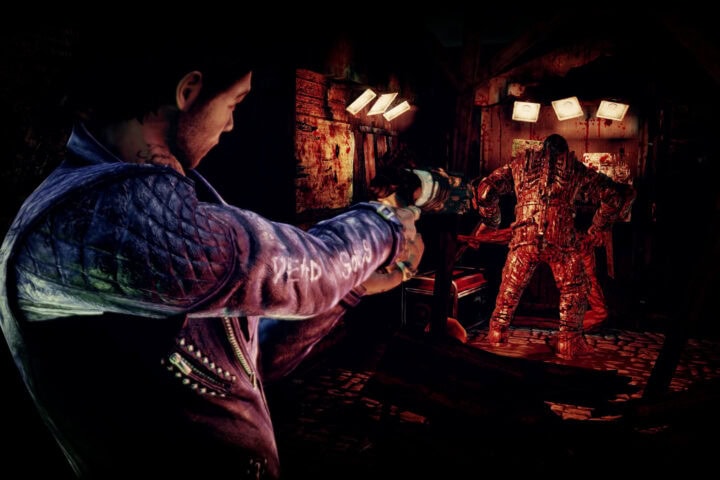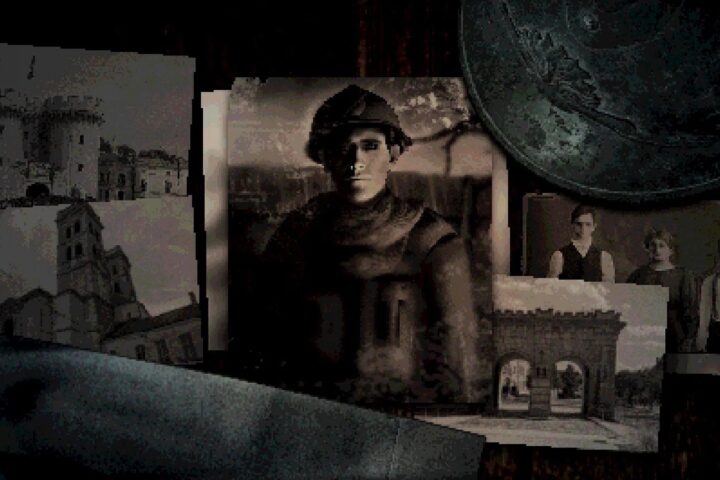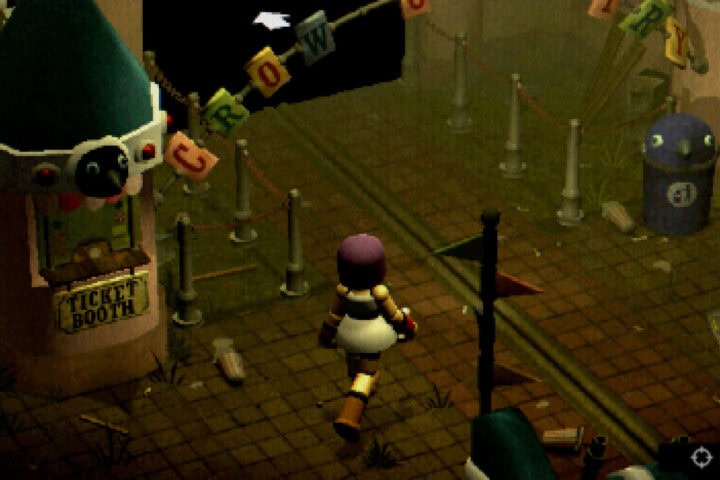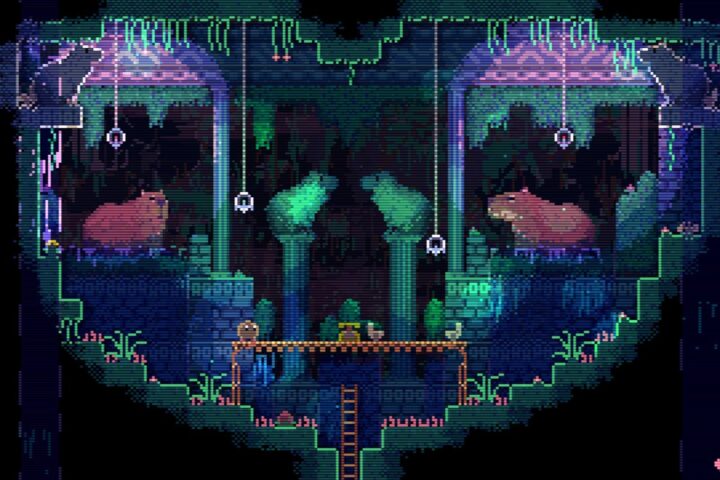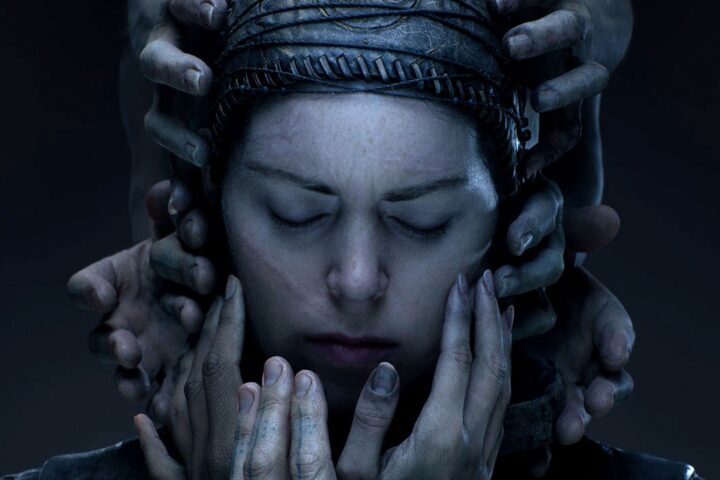Of the many different puzzle types in Simogo’s Lorelei and the Laser Eyes, the central one is a maze, and the way in which you interact with it speaks to the game’s all-encompassing brilliance. You keep getting sucked into the maze in different ways from the game’s traditional third-person view, dead ends visible from afar, and from a tighter angle that claustrophobically limits your view to hallways, their floral wallpaper rippling with menace.
Then, the maze’s pattern bleeds into an optional (and more complex) knock-off of a Pac-Man stage. Your path becomes the solution to other puzzles. You’re pursued by phantasms who recall the central figure of René Magritte’s The Son of Man, but with mazes for faces instead of apples. Impressively, the more the game foregrounds the maze-like elements, the more it reveals itself to be more like a labyrinth, for it actually has no dead ends, only a steady stream of lively beginnings wherein puzzles beget puzzles and questions spark questions.
Your progress through Lorelei and the Laser Eyes is measured in a percentage of “truth,” and completing the game hinges on your understanding of the story, but while the game’s design is filled with deliberate, intuitive solutions to each puzzle, the narrative keeps twisting the interactions between a Man and a Woman, suggesting that not all things are so clearly, logically solvable. The remarkably clever puzzles in the game, many of which revolve around unlocking the various rooms in the stylish yet abandoned 1960s Hotel Letztes Jahr, feed into this notion, turning elements of plot—names, dates, events—into the needed keys or combinations to locks.
Time and again, answers are provided in plain sight, and the trick is figuring out how to interpret or input what you’ve been given, such as finding a way to enter a four-digit date on a keypad with 16 prompts. For others, it’s a matter of synthesizing the notes you collect in your reviewable Photographic Memory section, where you can reference and make sense of zodiac symbols, Greek letters, phases of the moon, wine lists, fictional film oeuvres, and more.
Perhaps naturally, the plot of Lorelei and the Laser Eyes is presented obliquely, with three similar stories set in 1847, 1963, and 2014 weaving in and out of one another. You’ve come to the hotel at the invitation of a Man, just as another Woman once came at the invitation of an eccentric artist and filmmaker, just as a Man once came at the behest of his secret order. Fictions and realities blend seamlessly together as you wander the hotel’s various rooms, collecting pages of a script that echoes your current circumstances.
Through it all, the interactive mixed-media art exhibitions of Lorelei Weiss—who may or may not be you—keep hinting at the existence of simultaneous realities. By its midpoint, you’ll be playing not just the game but also a 1980s point-and-click version of it that can be loaded from in-game diskettes, and a 1998 Resident Evil-style mockup on a developer’s console.
At times, Lorelei and the Laser Eyes threatens to overwhelm. Nothing, it seems, can be accomplished without solving a puzzle. The maps necessary for navigation around the game’s massive old mansion-turned-hotel are hidden within architectural puzzle canisters, shortcuts are unlocked by solving classic logic and math puzzles found in a book, and door keys are sometimes themselves locked. You even have to solve a puzzle to access the game’s unlimited espresso machines, which (natch) temporarily boost your speed.
But this flood of non-linear puzzles is ultimately part of Lorelei and the Laser Eyes’s charm, in that if you get stuck on one particular puzzle, there are likely others that you can shift your focus toward, and those in turn might help prod you toward a necessary logical connection. It’s only once the stream of puzzles dries up that the game slightly stumbles, for if you’ve missed a puzzle or misinterpreted what the developers want you to do, there are no clear indications on how to progress. It would have been nice at moments like these if the man you’re corresponding with in-game pointed you toward currently solvable puzzles instead of trolling you with so-called advice like “If the flute blows smoke there will be no dance.”
But it’s a credit to the Simogo team’s incredibly sharp writing that however obtuse the game’s puzzles may seem at times, they never feel unsolvable. As noted in one of the many bits of sumptuous flavor text scattered about the Hotel Letztes Jahr: “Getting stuck is one of the key parts of the process.” And in holding true to the manifestos of the artists at the heart of the story, Lorelei and the Laser Eyes manifests puzzles as art, requiring the proper interpretations of mixed-media sculptures, paintings, and more. It’s all one unexpected thrill after another as you go deeper and deeper into a maze of memories, metaphors, and magic.
This game was reviewed with code provided by fortyseven communications.
Since 2001, we've brought you uncompromising, candid takes on the world of film, music, television, video games, theater, and more. Independently owned and operated publications like Slant have been hit hard in recent years, but we’re committed to keeping our content free and accessible—meaning no paywalls or fees.
If you like what we do, please consider subscribing to our Patreon or making a donation.


